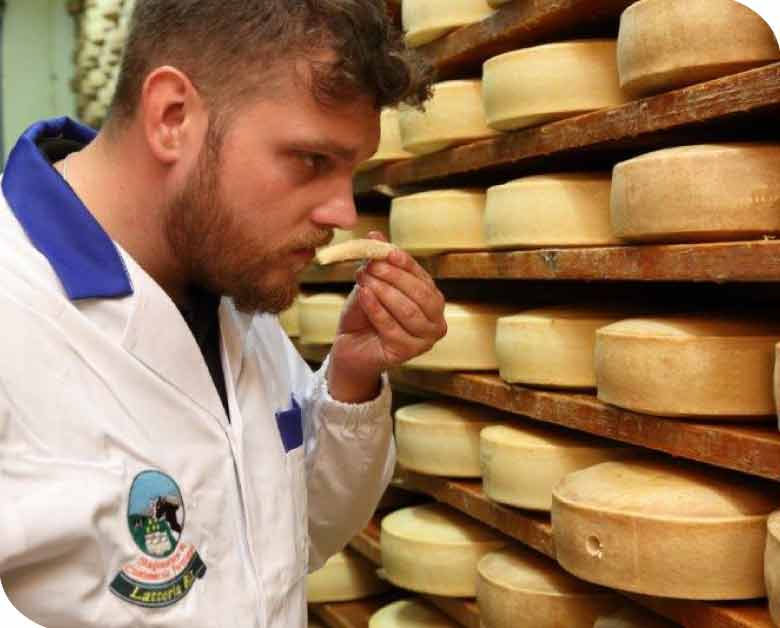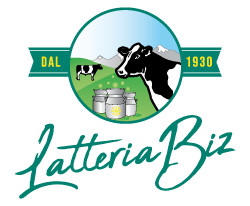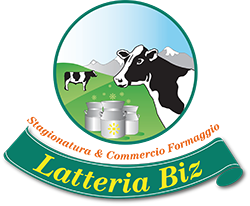The cheese?
Made as it once was
Do you want to know closely how to make the perfect cheese? Discover with Biz Dairy the various phases that lead to the creation of one of the most consumed foods on Italian tables.
How is cheese made?
The cheese is obtained from the coagulation of whole, skimmed or partially skimmed bovine, ovine, caprine or buffalo milk. To proceed with the production of the wheels it is necessary to bring the main ingredient to the boil, reaching the same temperature as the animal's stomach and adding very slowly the rennet, a particular liquid substance, in powder or paste, which allows splitting the casein, first obtaining the curd and, finally, the fresh or aged cheese.
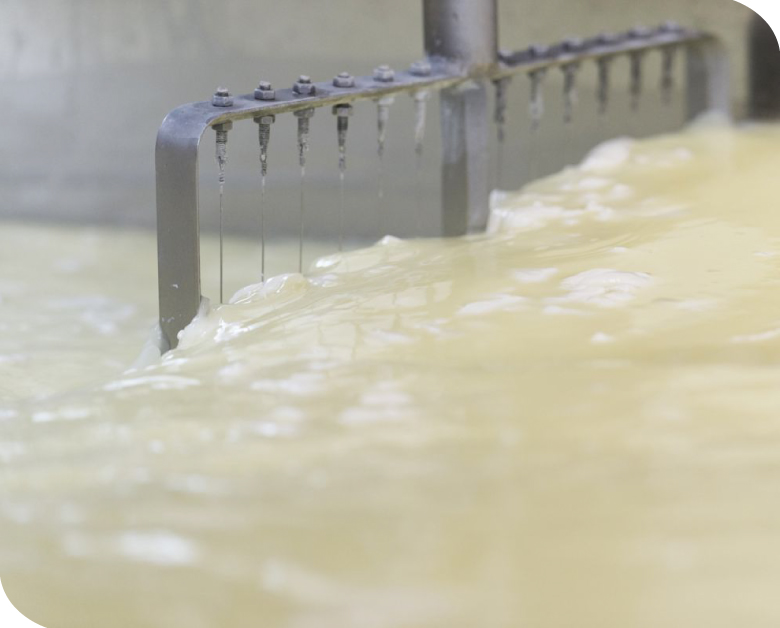
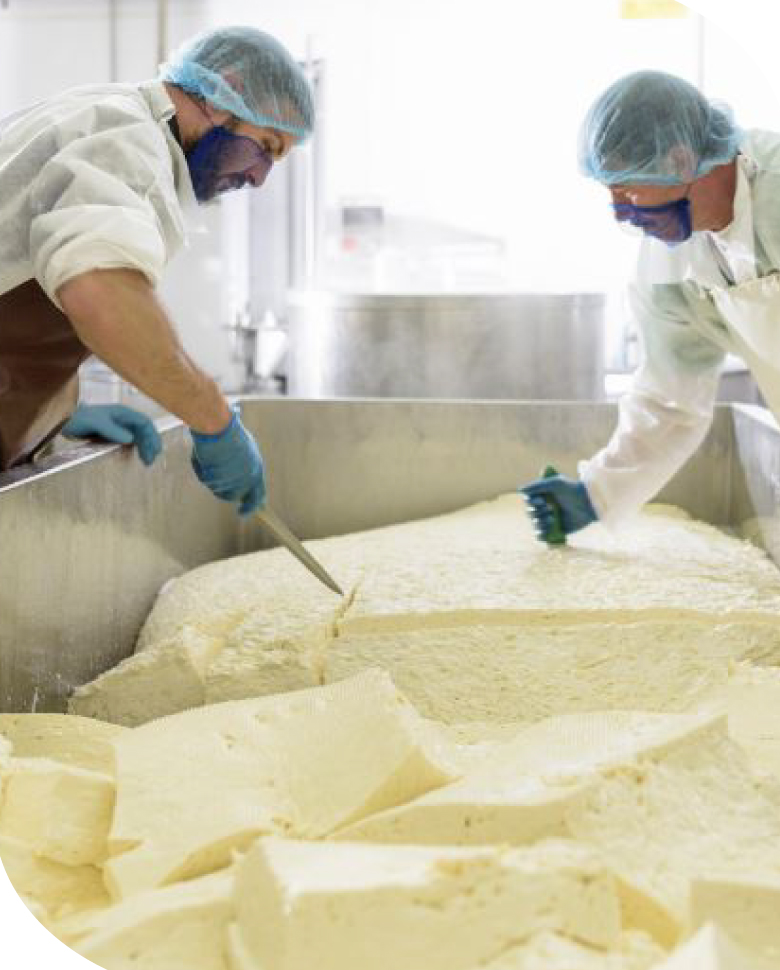
The breaking of the curd and the salting.
While the coagulation process takes place, the curd will tend to separate the whey, which, when extracted and treated, can be used in the production of fresh ricotta or as an additive in other food or pastry products.
At this point, the cheesemaker proceeds to break the curd into pieces of different sizes, which will then be collected and placed in special moulds according to the different types of cheese to be obtained, subjecting them to constant pressing, necessary to make flow out the residues of the whey left on the surface.
Subsequently we move on to salting, a production phase necessary for almost all cheeses, which allows the cheese to obtain multiple characteristics, such as conferring the right sapidity, and favouring the formation of the rind.
The seasoning and the ageing.
After salting, the wheels are left to dry for at least a whole day on absorbent rags and, once completely restored, their seasoning begins, which takes place in very characteristic and particular environments for several days, months or years. During the maturation period, the cheese goes through a series of significant changes, which are essential for defining the taste, high quality and genuineness of the product.
All Biz Dairy cheeses are still produced in an artisanal way today, with the scrupulous use of ancient recipes, methodologies and practices of over eighty years of experience in the dairy sector, which allow us to make these typical tastes be part of the experiences of everyone's culinary tastes, whether it's tastings, combinations, aperitifs, complete meals, or at the end of a meal, do you remember the famous saying?
